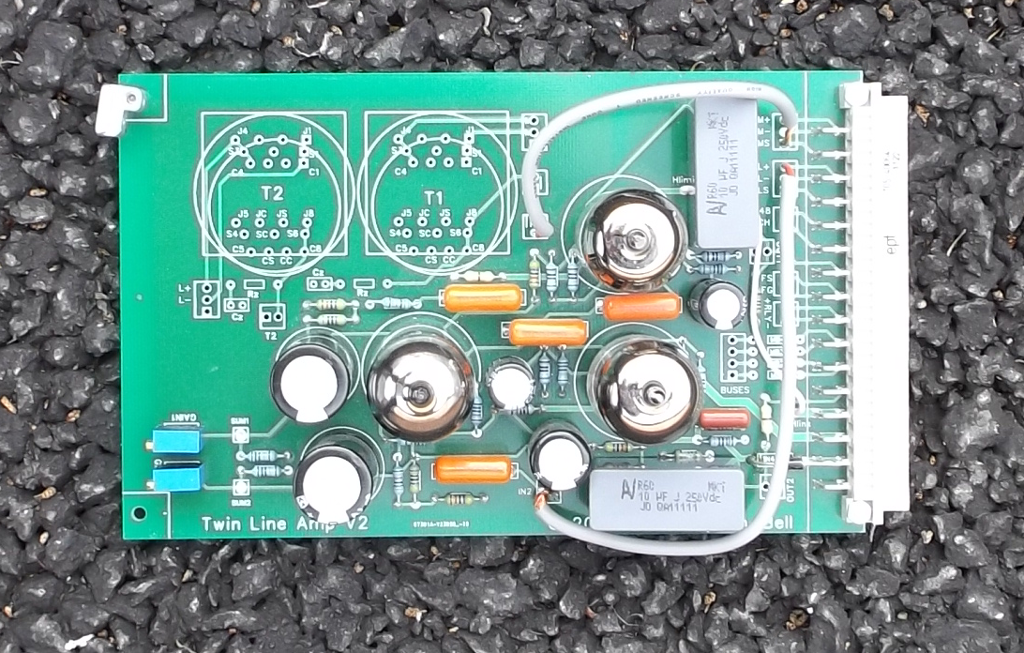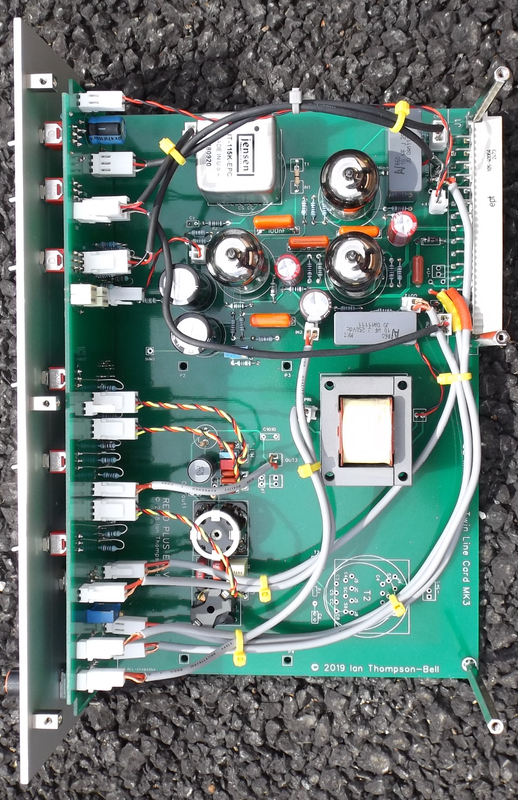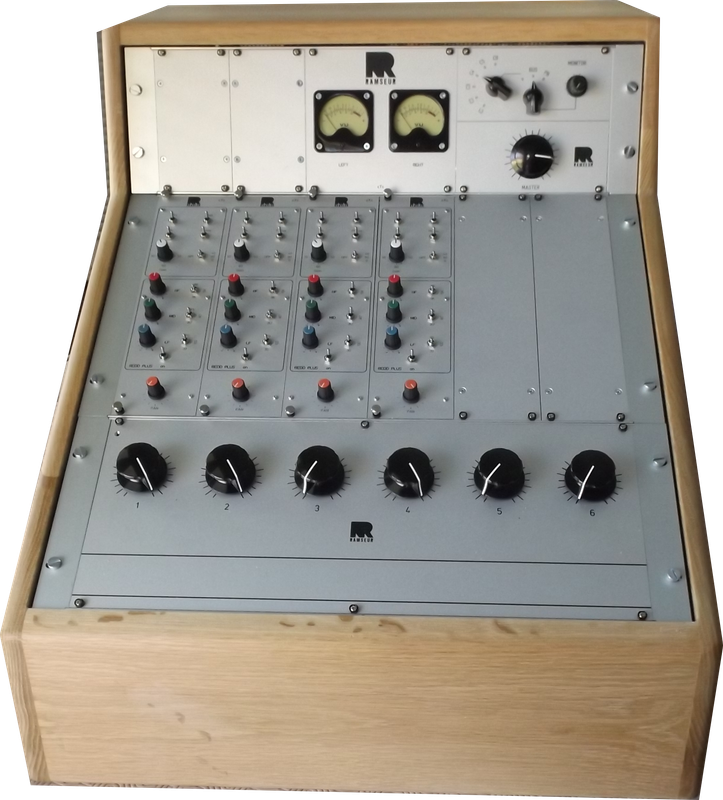The Mark 3 tube mixer is very different to the original EZTubeMixer but they do share some core technology, particularly the the basic 3 triode gain block used throughout the designs and the use of standard Eurocard sized PCBs and a 32 way connector to the backplane PCB. The main differences are in implementation:
- The Mark 3 uses a different pin out on the 32 way connector. This moves the power connections to the centre of the connector ,which makes power tracking simpler and shorter, and adds two more balanced inputs/outputs.
- The EZTubeMixer uses standard Eurocard specific extruded aluminium cassettes to house modules. These are very expensive and wasteful of space. The Mark 3 dispenses with the cassette and replaces it with a single sheet of steel shielding and some stand offs.
- The EZTubeMixer mounts controls directly on the Euocard PCB. This means that every time you want to change the position of a control you have to layout the whole Eurocard PCB again. The Mark 3 design mounts controls directly to a separate PCB that sits 10mm behind the front panel. So, if you need to change the position of a control , the main Eurocard PCB remains unchanged. All you have to do is change the smaller front panel PCB. A set of standard pots, toggles, push buttons and rotary switches has been selected all of which are capable of fitting directly to the front panel PCB which is 10mm behind the front panel itself.
- The EZTubeMixer mounts controls directly on the Euocard PCB. This, combined with using an aluminium extruded cassette, means that a typical front panel control is a minimum of 20mm from the left hand edge of the front panel. This is not an issue if the front panel is 70mm wide but in the Mark 3 it is only 35mm wide. The Mark 3 dispenses with the extruded cassette which means front panel controls can now be mounted as little as 9mm from the edge of the front panel which is much better for a 35mm wide module.
- The EZTubeMixer mounts tubes directly on the Eurocard PCB so they stick out horizontally. This is the principle reason why the EZTubeMixer modules are 70mm wide. The Mark 3 mounts each tube on a small PCB along with a right angled connector (white in the second picture below). This connector is then soldered to the Eurocard PCB so the tubes sit vertically. This is what allows the width of the Mark 3 modules to be shrunk to 35mm. However, the tubes now consume a considerable amount of PCB area which makes PCB layout harder. As a result, the new Mark 3 version of the Twin Line Amp (TLA) has no room for the two input transformers found on the EZTubeMixer version.
 |
| EZTubeMixer version of Twin Line Amp |
 |
| Mark 3 Twin Line Amp (TLA) |
As you can see in the picture above, there is just about enough room on the new TLA board for a couple of small OEP input transformers but if they are fitted there is no room for front panel controls. You will also notice the two large electrolytic capacitors lying on their side near the bottom of the PCB. These are in series with the gain setting resistor. They are 100uF 250V electrolytics. At the time this board was built I could not find a radial lead version that was short enough (there is about 25mm of height available) so I was forced to lay them on their sides. I have since sourced a version that is 25mm high which has freed up a little more PCB space
Theory into Practice
The most recent mixer I built was for a customer who wanted to use large rotary faders so it made sense to use 70mm wide EZTubeMixer style modules. However, as this was a custom design, which meant new Eurocard PCB and front panel layouts would be required, it made sense to decouple front panel design from the main Eurocard PCB design - which is exactly what the Mark 3 aims to do.
So this mixer became a combination of EZTubeMixer and Mark 3 - in other words a crossover mixer.
It has a new 6U Eurocard PCB which includes the active electronics for the mic pre and EQ gain make up (essentially the EZTubeMixer TLA cut and pasted). The tubes are mounted horizontally just as in the EZTubeMixer design. However, the 32 way connector has been changed to conform to the Mark 3 pin out. The PCB also holds the input transformer (Jensen) and the output transformer (Electro Mag). This PCB also holds the LC components of the EQ.
The front panel is built using the Mark 3 method with all the controls mounted on a separate PCB that is mounted onto the front panel. The EQ is a version of the REDD EQ modified to have three selectable frequencies on all three bands.
 |
| Crossover Channel Module |
You can see the three stand offs on the right hand side; two on the 32 way connector and one at the bottom right hand corner of the PCB. These, together with the three small blocks you can see on the front panel, are used to mount the 1mm thick galvanised steel screen. Together these form a light weight surprisingly strong module with good screening.
 |
| 70mm wide channel module |
The completed mixer looks like this:
Conclusion
The build of this mixer, although very much in the style of the EZTubeMixer, has allowed me to prove many aspects of the Mark 3 design.

No comments:
Post a Comment